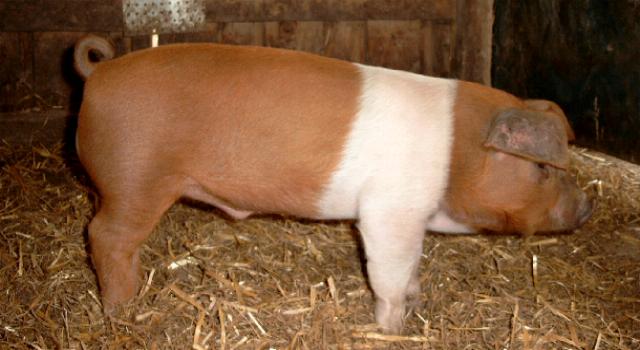These Pigs Don’t Fly, But They Are Flags

Pictured above is a domestic pig, a very common animal found on farms throughout the world. Per Statista, there were more than 750 million such pigs globally in April of 2022, so it’s pretty likely that you’ve seen a picture of a pig before. But this one is a bit different. As you can see, it’s a red pig with a thick vertical white band toward its front half. And that’s rare — very rare. This breed of pig, officially called the “Husum Red Pied,” is so rare that from 1968 until 1984, per Wikipedia, “the breed was considered extinct.”
And it probably shouldn’t have existed in the first place. Well, it wouldn’t have, but for the Prussians.
The Kingdom of Prussia existed from 1701 through 1918 and was a predecessor of Germany. As was common in Europe over those decades, war and expansion were part of Prussia’s game plan. During the first half of the 1800s, both Prussia and the Kingdom of Denmark claimed the broad land bridge now connecting the peninsula of Denmark to mainland Germany — this was known as the Schleswig–Holstein question — and in 1864, the two sides resolved this dispute through arms. That February, the Second Schlewig War broke out, lasting through October. In the end, Prussia took control of the disputed region — much to the chagrin of the people who lived there but considered themselves Danes.
The Prussians didn’t want any support for Denmark within their borders, though, so they banned anyone from flying the Danish flag. For would-be-Danish farmers in North Frisia, one of the regions now under Prussian control (here’s a map), this wasn’t appreciated. They wanted to show their allegiance to the country in the north, despite the Prussians’ rules. So they got creative, as Mental Floss explains (with a link added by me):
Through a crafty program of crossbreeding, Danish farmers tried to create a new breed of pig that faintly resembled their beloved home’s flag. It wasn’t terribly difficult. The banner of Denmark is relatively simple—a flat red background covered by a long, white Nordic cross—so all the pig needed was a coat of red fur and one or two prominent white belts.
The pigs — called Protestschwein, or “Danish Protest Pig” — didn’t win back the territory for Denmark. Today, North Frisia is part of Germany. But modern-day Germans appreciate the historical significance of the animal. As Livestock of the World notes, “the German federal state of Schleswig-Holstein supports the preservation of the race for its cultural value,” and today, there are about 140 Danish Protest Pigs around the world, the vast majority of which live in German zoos.
Bonus fact: The flag of Denmark has a claim to fame that is probably more significant than “the only one (as far as we know) to be recreated on a breed of pig.” According to the experts at Guinness World Records, the flag of Denmark holds the title of “oldest continuously used national flag,” dating back to 1625.
From the Archives: The King Who Received Six Votes Out Of 240,000: How a Danish prince became the King of Greece.
